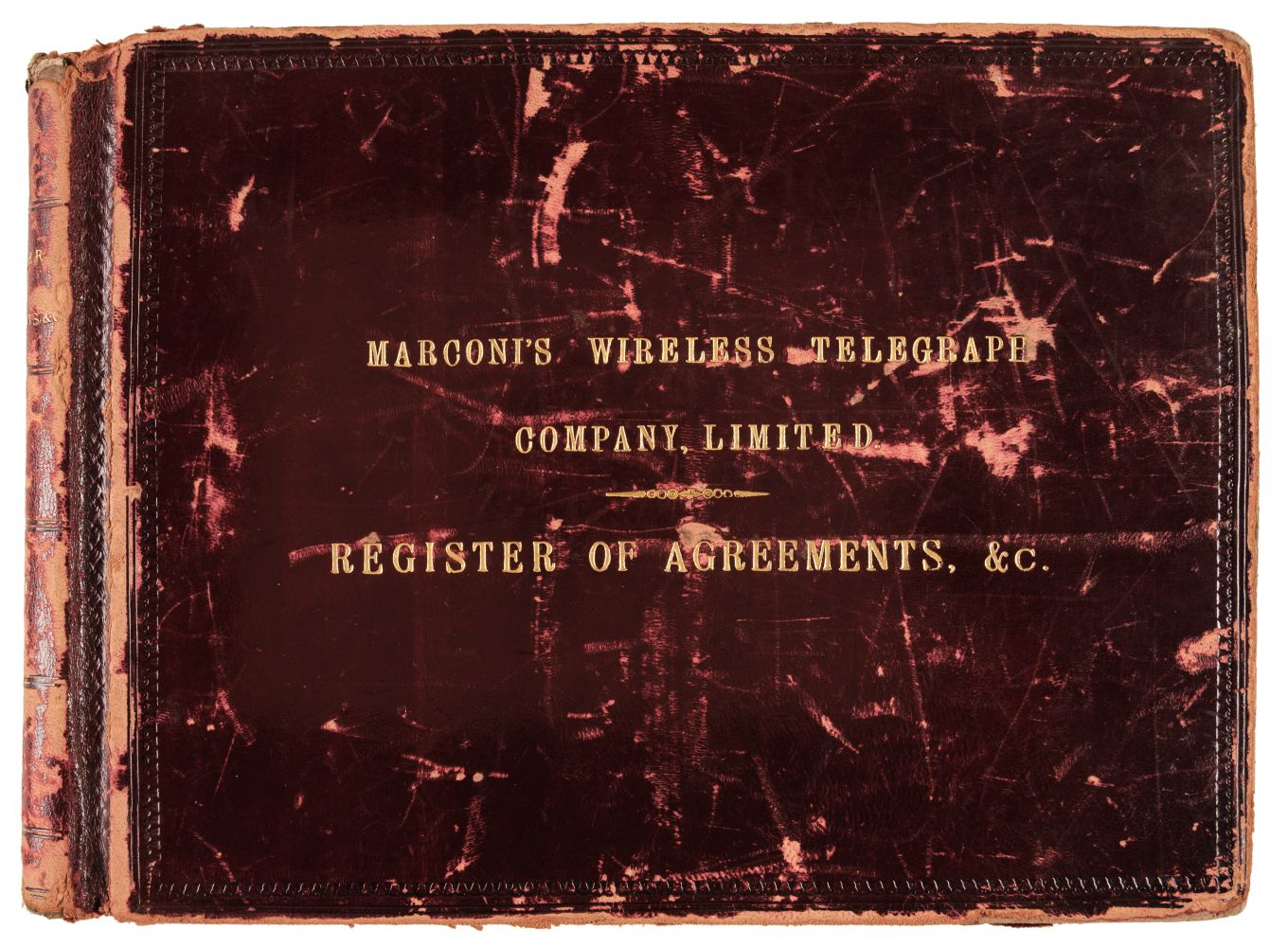large 4to volume in brown calf boards with marbled end papers and paste downs, spine in gilt "RECORDS", with 21 pages of inked manuscript text and a few scattered manuscript loose notes, earliest date is Jan. 15, 1835, latest June 29th 1836. An exceedingly important manuscript journal in which the organizational principles of the American Union for the Improvement of the Colored Race are set forth, and revealing the inner struggles of this short-lived organization. The American Union was one of the earliest in the Northeast to call for unity of all abolitionists in opposing slavery. The minute book begins with the first meeting of the new organization, held on January 15, 1835 at the Cowper Committee Room, Cornhill, Boston. Present at this first meeting was an Executive committee, consisting of Daniel Noyes, Ethan A. Andrews, B.B. Edwards and Charles Scudder, along with Leonard Bacon and Jacob Abbot who were invited by Edwards as Chairman of the Executive Committee. At the suggestion of Bacon, the organizational principles were: 1. That we intend to organize and put into execution a system of measures for improving the condition of the colored people in this part of the country (and state some principles on this subject 2. That we intend to extend to the South the same principles and influences so far as we can consistently with the well being of all the parties concerned. 3. To institute most extensive inquiries in respect to the actual condition of the colored people in this and in other countries and to disseminate the information thus obtained. 4. In regard to slavery that in our opinion the question is not whether slavery is wrong, -- that we shall take it for granted that it is wrong, -- morally, politically and economically, -- in every respect and in all its circumstances wrong. The question with us is how we can best convince the Southern people of this, and how we can find out ourselves, or lead them to find out for themselves how to get rid of the evil. 5. That we intend to do what may be practicable for promoting the welfare of the race in Africa, by establishing schools &c. especially in the colonies. The Executive committee met four more times during January, agreeing to offer the position of Corresponding Secretary to Leonard Bacon at an annual salary of $1600, establishing various committees, answering attacks by the Anti-Slavery Society, and agreeing to publish a tract outlining the goals espoused at the organizational meeting. Over the remaining months of 1835, the Executive Committee met 22 times, discussing fund raising, searching for a leader (Bacon declined), correspondence with various abolitionists, and other matters. After this first, organizing year, the Executive Committee met a mere five times in 1836. There are no entries for 1837, and but a single entry for 1838, suggesting that the society disbanded sometime afterwards. The later minutes reveal an organization that was gaining little traction. Members of the Executive Committee resigned and fund-raising was a constant spectre. Presumably, the organization found itself in competition with other similar societies, including the powerful American Anti-Slavery Society, which by 1835 already had more than 400 nationwide chapters and 250,000 members. The high-water mark for activity of this short-lived organization seems to be recorded in this ledger. It should be noted that their "tract", was published in 1836, comprised of a series of papers, apparently edited by Edwards (Andrews, Ethan A. Slavery And The Domestic Slave-Trade In The United States. In A Series Of Letters Addressed To The Executive Committee Of The American Union For The Relief And Improvement Of The Colored Race Boston. 1836.) Condition: Spine half loose, else VG.
large 4to volume in brown calf boards with marbled end papers and paste downs, spine in gilt "RECORDS", with 21 pages of inked manuscript text and a few scattered manuscript loose notes, earliest date is Jan. 15, 1835, latest June 29th 1836. An exceedingly important manuscript journal in which the organizational principles of the American Union for the Improvement of the Colored Race are set forth, and revealing the inner struggles of this short-lived organization. The American Union was one of the earliest in the Northeast to call for unity of all abolitionists in opposing slavery. The minute book begins with the first meeting of the new organization, held on January 15, 1835 at the Cowper Committee Room, Cornhill, Boston. Present at this first meeting was an Executive committee, consisting of Daniel Noyes, Ethan A. Andrews, B.B. Edwards and Charles Scudder, along with Leonard Bacon and Jacob Abbot who were invited by Edwards as Chairman of the Executive Committee. At the suggestion of Bacon, the organizational principles were: 1. That we intend to organize and put into execution a system of measures for improving the condition of the colored people in this part of the country (and state some principles on this subject 2. That we intend to extend to the South the same principles and influences so far as we can consistently with the well being of all the parties concerned. 3. To institute most extensive inquiries in respect to the actual condition of the colored people in this and in other countries and to disseminate the information thus obtained. 4. In regard to slavery that in our opinion the question is not whether slavery is wrong, -- that we shall take it for granted that it is wrong, -- morally, politically and economically, -- in every respect and in all its circumstances wrong. The question with us is how we can best convince the Southern people of this, and how we can find out ourselves, or lead them to find out for themselves how to get rid of the evil. 5. That we intend to do what may be practicable for promoting the welfare of the race in Africa, by establishing schools &c. especially in the colonies. The Executive committee met four more times during January, agreeing to offer the position of Corresponding Secretary to Leonard Bacon at an annual salary of $1600, establishing various committees, answering attacks by the Anti-Slavery Society, and agreeing to publish a tract outlining the goals espoused at the organizational meeting. Over the remaining months of 1835, the Executive Committee met 22 times, discussing fund raising, searching for a leader (Bacon declined), correspondence with various abolitionists, and other matters. After this first, organizing year, the Executive Committee met a mere five times in 1836. There are no entries for 1837, and but a single entry for 1838, suggesting that the society disbanded sometime afterwards. The later minutes reveal an organization that was gaining little traction. Members of the Executive Committee resigned and fund-raising was a constant spectre. Presumably, the organization found itself in competition with other similar societies, including the powerful American Anti-Slavery Society, which by 1835 already had more than 400 nationwide chapters and 250,000 members. The high-water mark for activity of this short-lived organization seems to be recorded in this ledger. It should be noted that their "tract", was published in 1836, comprised of a series of papers, apparently edited by Edwards (Andrews, Ethan A. Slavery And The Domestic Slave-Trade In The United States. In A Series Of Letters Addressed To The Executive Committee Of The American Union For The Relief And Improvement Of The Colored Race Boston. 1836.) Condition: Spine half loose, else VG.





.jpg)

.jpg?w=400)






Testen Sie LotSearch und seine Premium-Features 7 Tage - ohne Kosten!
Lassen Sie sich automatisch über neue Objekte in kommenden Auktionen benachrichtigen.
Suchauftrag anlegen